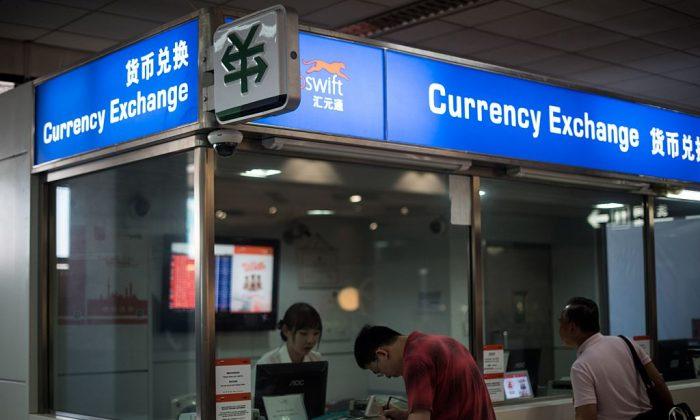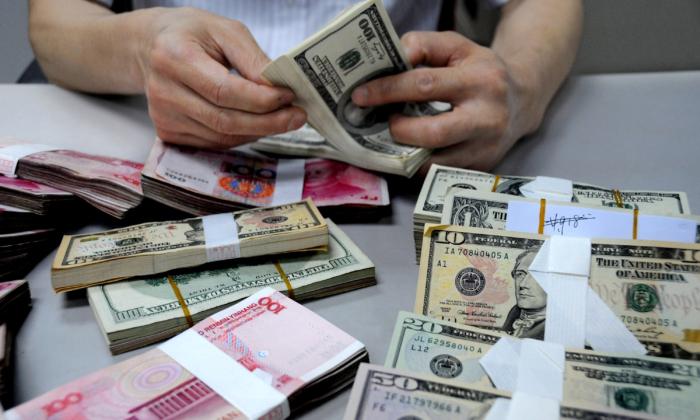An analysis released by the Federal Reserve Bank of New York (FRBNY) on Jan. 6 suggests that China’s current COVID-19 outbreak is slowing the global supply chain’s return to a normal range and negatively impacting neighboring trade partners.
The GSCPI integrates transportation cost data with manufacturing industry indicators, such as Purchasing Manager’s Index (PMI) data on supplier delivery times, backlogs, and raw material inventories. It focuses on manufacturing in seven economies: China, the United States, the UK, the Eurozone, Japan, South Korea, and Taiwan.
The more the GSCPI value deviates positively from the multi-year average, the greater the pressure on the global supply chain.
According to the report, in the past, when supply chain conditions in China tightened, the rest of the world’s supply chain also tightened. Over the past three years of the pandemic, the GSCPI standard deviation reached a positive peak of 4.3 at the end of 2021 and then dropped sharply; in March 2022, the GSCPI standard deviation dropped to a positive 2.8 but rose again in April due to the impact of China’s “zero-COVID” policy and the Russia–Ukraine war.
The report aims to examine the impact of China’s response to the current outbreak on the global supply chain. It notes a novel development in recent months: namely, that conditions in China are apparently impacting global supply conditions less than in the past. It suggests that this could be attributed to higher herd immunization rates in developed countries as well as less restrictive pandemic control measures.
China’s Manufacturing PMI Continues to Weaken
On Jan. 1, China’s Bureau of Statistics released the December operating conditions of China’s PMI.Of the five sub-indices of China’s manufacturing PMI, its seasonally adjusted Supplier Delivery Time Index showed the longest period of decline, starting in July of 2022 and continuing for six months. It fell below the critical point of 50 percent in August, dropped further to 46.7 percent in November, and then plunged 6.6 percent to 40.1 percent in December. December’s number was 20 percent lower than July’s.
These indicators all point to lengthening delivery times for suppliers of raw materials to the manufacturing industry.
The official explanation from the CCP was that a shortage of logistics and transportation manpower caused by the pandemic resulted in longer delivery times.
Since early December, when the Chinese regime suddenly reversed its pandemic policies, China has been crippled by an outbreak of COVID-19 that has nearly collapsed hospitals and funeral homes.
Impact of Current Chinese Outbreak on Australia
Australia’s Treasury Minister Jim Chalmers said in an interview with Sydney’s 2GB radio station on Jan. 3 that China’s current pandemic policy will affect Australia and its supply chain. Chalmers listed China as one of the top five factors that will affect Australia’s economic situation in 2023, along with the United States, the UK, the EU, and the Russia–Ukraine war.Current affairs commentator Ma Xianghong told The Epoch Times on Jan. 9: “Australia’s dependence on the Chinese economy makes it difficult to sustain a loss or disruption in the supply chain. Still, if the Australian government can resolve to break away from that dependence and gradually diversify supply from the Chinese market, it will benefit the country and the people in the long run.”
Ma further explained: “On the surface, the losses will be greater in China than in Australia. China is not as strong as it seems—the regime is unstable, the food crisis, the unpredictable policies, and so on. So with the world moving away from the Chinese economy and creating new supply chains or building their own, it should not be difficult for Australia to source supplies from other countries.”
China’s Role in Global Marketplace Declines
The new export order index for Chinese manufacturing fell to 41.6 percent in April 2022, its lowest number since June 2020; it subsequently rebounded but fell again to 44.2 percent at the end of the year, reaching its second lowest level since June 2020.According to Ma: “China’s foreign trade exports have fallen, mainly due to the difficulty in delivering domestic orders on time and the shift of international orders to Southeast Asia, which has had a greater impact on Chinese exporters. At the same time, the return of the U.S.-led manufacturing industry has led to a structural decline in China’s exports to the United States, and as countries come to see what the CCP is doing, mutual trust is becoming difficult to repair, which will affect the global supply chain.”






